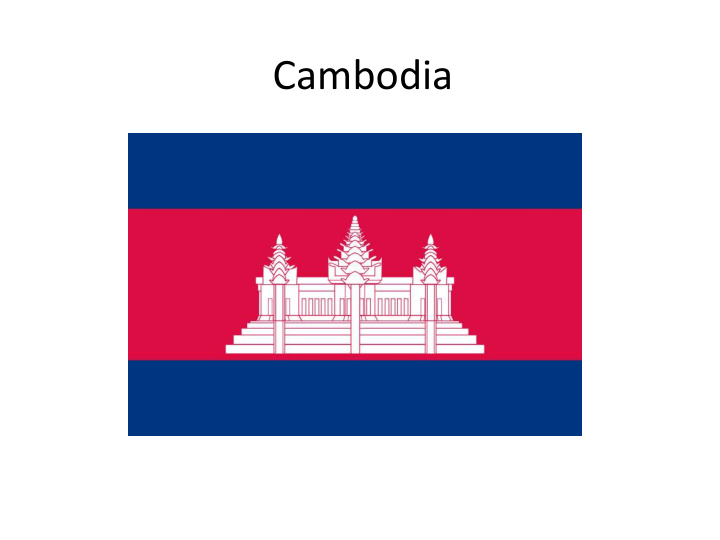



Cambodia
Ireland Cambodia
Cambodian Schools Cambodian children study math, history, geography, science, Khmer (Cambodia's official language), English, and French, as well as art, music, and dance. Most students wear uniforms
Leak Kon Saeng (Duck Duck Goose) Leak Kon Saeng is a popular game in Cambodia. The game is similar to “duck duck goose,” but instead of tapping a person on the head, the player who is “it” places a knotted piece of cloth behind the “goose
Cambodian Families Many Cambodians live with members of their extended families. Parents, siblings, grandparents, aunts, uncles and cousins may live in the same home. The extended families often work together as well
Cambodian Food Rice and fish! Cambodians eat rice at every meal. It is served fried, steamed, or in the form of noodles. Fish is eaten fresh, dried, smoked, or as a paste called prahok and is spiced with hot peppers, lemon grass, or mint. Cambodians even use rice in desserts. They combine it with fruit and coconut milk to create a sweet treat
Cambodia’s National Animal - Kouprey The kouprey, a wild forest cow, is known for its long, curving horns. One of the rarest animals in the world, the kouprey is Cambodia's national animal.
Bonn Om Teuk (water festival) Bonn Om Teuk, or water festival, is celebrated in November at the end of the rainy season when the water of the Mekong River begins to recede. Cambodians hold rowing races on the river during the festival.
Angkor Wat Temples Thousands of tourists travel to Cambodia each year to visit the temples at Angkor Wat. The temples were built in the 12th century
Cambodian Climate Cambodia has a tropical climate, with a rainy monsoon season from May to November, and a dry season from December to April. Temperatures don't vary much from season to season; the range is 21-31°C (70-88°F) in the dry season, and 24-35°C (75-95°F) in the wet season. Precipitation varies from just a trace in the dry season to over 250 cm (10 inches) in October
Religion in Cambodia Most Cambodians (95%) today are Theravada Buddhists. This austere version of Buddhism became prevalent in Cambodia in the thirteenth century, displacing the combination of Hinduism and Mahayana Buddhism that was practiced previously. Modern Cambodia also has Muslim citizens (3%) and Christians (2%)
Recommend
More recommend